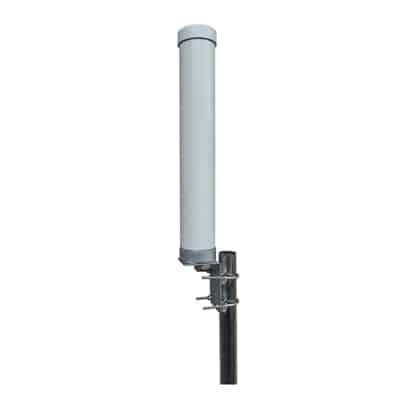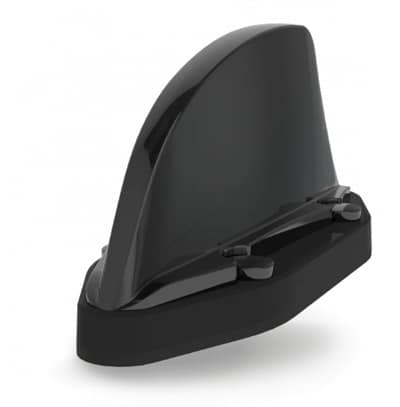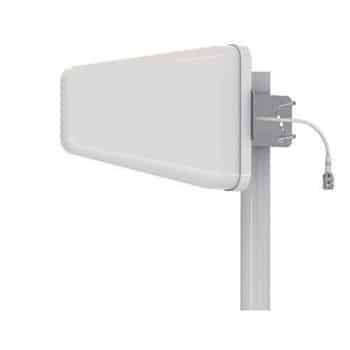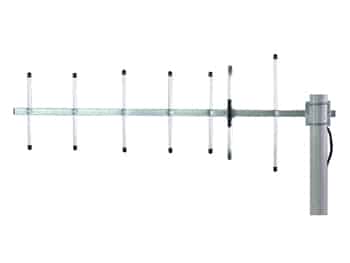Helium hotspots are blockchain-based decentralized networks that allow users to join the network and harvest cryptocurrency known as Helium Network Token (HNT). These hotspots enable users to connect to IoT devices that span a wide range of distances compared to wireless networks such as Wi-Fi. Moreover, compared to LoRaWAN, Helium networks provide a decentralized approach and are still built upon LoRaWAN technology. Another purpose delivered by Helium hotspots is to achieve low power and secure transmission of IoT data within the Helium network. This allows the users to reduce the costs of long-range IoT systems. This article will discuss one of the most important aspects of developing a Helium hotspot: selecting a suitable antenna for a hotspot. Selecting the best antenna for a given hotspot is crucial as it determines the performance of the hotspot and the overall Helium network. We will first understand the importance of Helium antennas in a Helium network, and their different types of antennas. Finally, a few practical considerations and installation tips are outlined for user reference.
Table of Contents
ToggleUnderstanding Helium Antennas and Their Importance
Helium antennas are elements that transmit and receive IoT information in decentralized Helium networks. Helium antennas are built for low-power and long-distance transmission. These antennas operate in the LoRaWAN frequency range dedicated to different geographical locations. For locations in North America, the frequency range is 902-930 MHz, and for Europe, it is in the range of 860-870 MHz.
In a Helium hotspot setup, Helium antennas play a crucial role as they govern the following factors of a Helium hotspot. The factors are:
- Performance: The antenna placement, type, and orientation determine the power of transmission into the Helium network from a given hotspot. Therefore, it is essential to determine the correct antenna for a given use case.
- Signal Coverage and Range: For a given topographical location, it is necessary to select the correct antenna type and gain to achieve optimal signal coverage.
- Directivity and gain: Helium antennas should meet the required gain levels to sufficiently provide connectivity throughout the Helium network. Moreover, depending on different geographical features, the directivity of antennas can affect the overall connectivity provided by Helium antennas.
Finally, Helium antennas play the crucial role of enabling the transmission of IoT data over the Helium hotspot in a Helium network.
Types of Helium Antennas
Understanding the importance of Helium antennas in Helium hotspots, let us investigate some of the common types of Helium antennas. Helium antennas are mainly divided into two groups:
- Omni-directional antennas
- Directional antennas
Omni-directional antennas are a type of antenna that radiates radio signals in all directions with equal gain and are equipped with a 360-degree directivity. These antennas provide full coverage, however, are susceptible to interference. These antennas are suitable for your Helium hotspot if you live in an urban or suburban environment. Pros and cons of omnidirectional antennas are summarized as follows:
Pros:
- 360-degree full coverage
- Usually are compact in size
- Easy to install and operate
Cons:
- Has a relatively low coverage distance
- Susceptible for interference
Directional antennas on the other hand are a type of antenna that covers an area or a sector of an area. They usually cover sectors of different angles with some common angles such as 60, 90, and 120 degrees. However, directional antennas are equipped with higher directional gain compared to omnidirectional antennas. These antennas are suitable for rural environments. The pros and cons of directional antennas are summarized as follows:
Pros:
- High range of coverage
- Resilient towards interference
- High directional gain
Cons:
- Complex designs
- Provide coverage only in the desired direction (area or a sector of an area)
- Complex installation process
Key Factors to Consider When Choosing an Antenna
It is essential to understand key factors that influence the performance, signal coverage, and directivity of Helium antennas used in Helium hotspots. These factors are vital in determining the correct antenna design for enhanced performance of your Helium hotspot. The key factors are:
Frequency:
It is necessary to understand the correct frequency band corresponding to your geographical location. Since Helium hotspots utilize LoRaWAN frequency bands, you must know the corresponding LoRaWAN frequency band in your area. LoRaWAN frequency bands of different areas are as follows:
North America – 902-930 MHz
Europe – 860-870 MHz range
Most Asian regions – 433 MHz range
Gain:
Gain of the antenna is defined as the ratio between the radiated power of the antenna in a specified direction and the radiated power of the reference (monopole) antenna. For most of the Helium antennas, it is measured in dBi. This is an important metric to compensate for interferences and attenuation introduced in the environment and RF system. As a thumb of rule, it is not desirable to have high gain levels. For urban environments, low gain levels and for rural environments medium gain levels are desired.
Height and location:
Antenna height is another key factor that is correlated with the expected gain of an antenna. The height and location of a Helium antenna is usually expected to cover helium hotspots within the range of 10 km. Also, for flat environments, high gain antennas with an elevated height are expected. Moreover, for indoor placements, the antennas are expected to be mounted in a ceiling with appropriate protection, whereas in an outdoor setting, it is expected to withstand the prevailing environmental conditions.
Cable quality and length:
Cables and other sub-systems in antennas introduce attenuation into the overall antenna system. Therefore, it is essential to minimize the impact of cable losses. Usually, every cable and sub-system will introduce a 0.5dB loss in the overall antenna system.
Weather resistance and durability:
This is another key factor to be considered, especially in an outdoor setting. It is advised to adhere to the required IP ratings matching your environmental conditions to ensure the longevity and durability of your Helium hotspot.
Practical Steps to Choose the Right Helium Antenna
The following are the practical steps to be considered when selecting the right Helium antenna for your Helium hotspot:
- Assessing the environment and placement of the antenna. It is important to place the antenna to achieve a higher degree of line-of- sight (LOS) and adapt to your environmental condition. For urban and sub-urban environments omnidirectional antennas are preferred while for rural environments directional antennas are preferred.
- Next, it is required to assess the potential obstacles in LOS. For a flat and high-vegetation environment, you may select a high gain antenna.
- Finally, when ordering the antenna, you should adhere to different communication policies and regulations in your region including the applicable frequency range and availability of Helium networks.
- Furthermore, you may join different forums and discussions on Helium networks to get updated about the earliest advancements and policies.
Installation Tips and Best Practices
Now let us outline some of the important tips and best practices in the installation of Helium antennas for your hotspot. These include:
- Adhering to instructed and documented installation techniques for different antenna types. For example, choosing and ensuring directional antennas cover the required region of interest and installing them to avoid any potential obstacles.
- Stable mounting and minimizing unnecessary cables and sub-systems.
- Antenna performance can be enhanced by having proper enclosures when necessary, carrying out proper maintenance schedules, and ensuring stable mounting of the antenna.
Troubleshooting Common Issues
Errors and disconnections are common in Helium networks. Here is some general advice on troubleshooting these common issues:
- Mitigating signal interference: Use proper shielding from other electromagnetic devices and ensure proper grounding of the antenna.
- Addressing connectivity problems: Check physical connections. Carry out network diagnostics using different network monitoring tools. Verify protocol naming conventions.
- Carry out regular maintenance checkups and ask for help from the community.
Conclusion
In this article, we discussed how to select a Helium antenna for your Helium hotspot. We outlined some of the types of helium antennas and their pros and cons. Moreover, we also discussed key factors to be considered when selecting a suitable antenna and practical steps for selecting an antenna. Finally, we outlined some of the general issues related to Helium antennas and tips to troubleshoot these issues.







